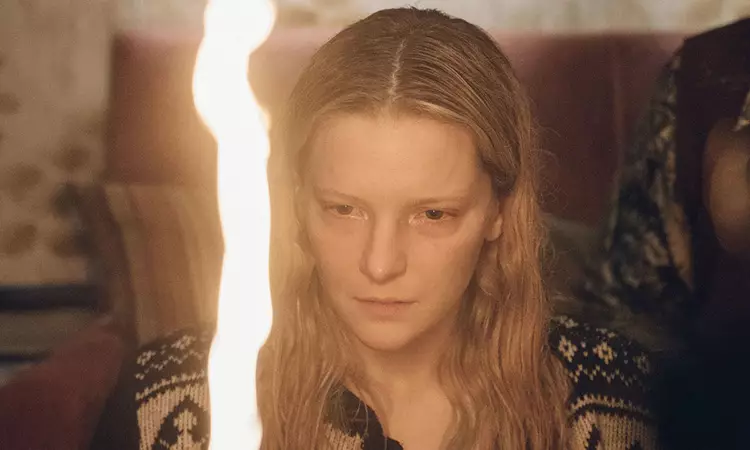Daniel Kokotajlo’s *Starve Acre* marks a significant contribution to the contemporary folk horror genre, drawing inspiration from classic films like Jerzy Skolimowski’s *The Shout* and Nicolas Roeg’s *Don’t Look Now*. This atmospheric film, situated in the hauntingly beautiful Yorkshire landscape, adeptly incorporates elements of emotional depth and chilling folklore, delving into the complexities of grief and family dynamics. Adapting Andrew Michael Hurley’s novel, Kokotajlo’s direction is emboldened by striking visuals and a masterful sound design that enhances the immersive experience of the narrative.
At the heart of *Starve Acre* is Richard, played by Matt Smith, an archaeologist burdened by the recent death of his father. His return to the family home, alongside his wife Juliette (Morfydd Clark) and their son Owen (Arthur Shaw), serves as a backdrop for exploring the stifling nature of grief. The isolation felt in this quaint yet eerie setting becomes an additional character in the story, as Richard and Juliette each grapple with their sorrow in disparate ways. Richard’s obsession with excavating history—symbolized through a haunting discovery of a Hare skeleton—contrasts sharply with Juliette’s attempt to confront her emotional demons through local rituals. This division becomes a poignant commentary on how grief can isolate individuals even within the bounds of a family unit.
Visually, *Starve Acre* excels with its meticulous attention to detail, particularly in its art direction and cinematography by Adam Scarth. The film captures the mid-1970s aesthetic with remarkable authenticity, from the textured, oversized knits sported by the characters to the rich folklore embedded in the narrative. Local legends transcend mere storytelling; they intertwine with the characters’ lives, creating a tapestry of anxiety and myth that reverberates throughout the film. The folklore elements, complemented by exquisite illustrations and poetry, achieve an evocative resonance that enhances the film’s chilling atmosphere.
Despite its many strengths, there is a sense of emotional disconnect that permeates *Starve Acre*. While Kokotajlo skillfully establishes tension and horror through the couple’s struggles, the film ultimately feels too steeped in familiar tropes, leaving emotional stakes somewhat unfulfilled. The dynamics between Richard and Juliette are compelling, aided by the nuanced performances of Smith and Clark, but the film occasionally meanders into territory that feels overly reliant on genre conventions without fully exploring the psychological dimensions of its characters.
A Satisfying Yet Familiar Journey
As the story unfolds, the narrative takes an exciting turn reminiscent of *Pet Sematary*, culminating in a conclusion that, while designed to elicit shock and intrigue, might feel predictable to seasoned horror aficionados. *Starve Acre* has the potential to resonate deeply, particularly for fans of folk horror who appreciate its atmospheric qualities and the rich tapestry of folklore. However, for viewers seeking an innovative exploration of its themes, the film may leave an impression of familiarity that hinders its emotional impact.
*Starve Acre* is a beautifully crafted film that weaves together elements of grief, isolation, and folklore, ushering in a modern interpretation of the folk horror genre. Despite its emotional shortcomings, it showcases Kokotajlo’s talent for creating an engaging and visually stunning cinematic experience, making it worthy of attention in a field that continues to evolve.

